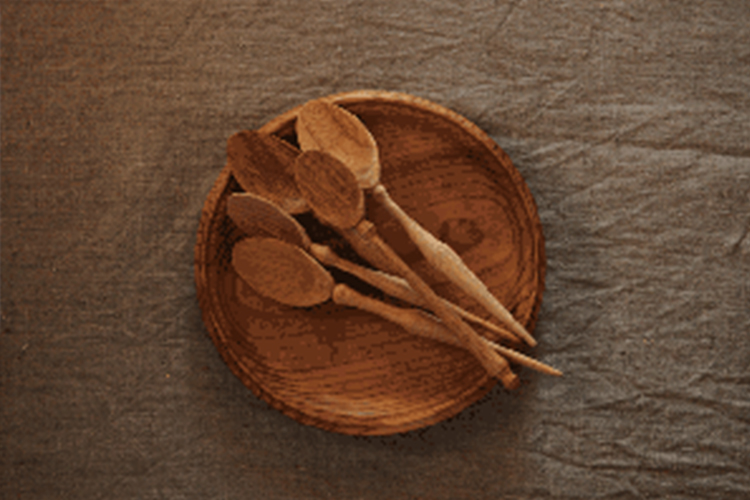Suda Jiro: A Woodworker Sharing the Warmth of Japanese Craft
Mar 12,2014
Suda Jiro: A Woodworker Sharing the Warmth of Japanese Craft
Mar 12,2014
Wherever you go in Japan, you’ll find pieces of tableware with a character all their own. They reflect the country’s cultural diversity and the vision of the artists who made them. Their presence adds sparkle to everyday surroundings. In this series, the owner of a tableware gallery showcases tableware that brightens your day and lends color to the season.
The snow was unusually heavy this year, and it had not yet completely melted when I joined Eto Aya, proprietor of the gallery Natsutsubaki, on a visit to the studio of woodworker Suda Jiro.
We found Jiro hard at work when we arrived at the studio. He was turning wood on the lathe while getting covered in sawdust, the floor strewn with timbers. When you looked at the deft movements of his hands, everything he did seemed so simple, as is often the case with skilled craftsmen. A bowl emerged from the wood as he carved, as if the wood itself knew what shape to assume. His woodworking materials consist of timber from mixed woodlands and scrap wood left over from making furniture. They come from a variety of species, including Somei-Yoshino cherrywood and oak. He carves them into strikingly beautiful dishes and vessels, each with its own distinctive grain.
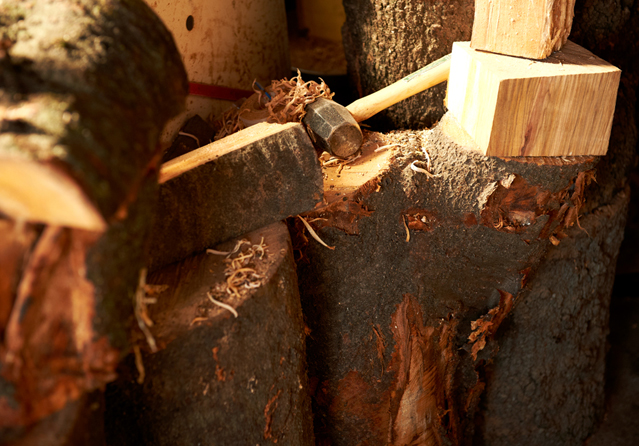
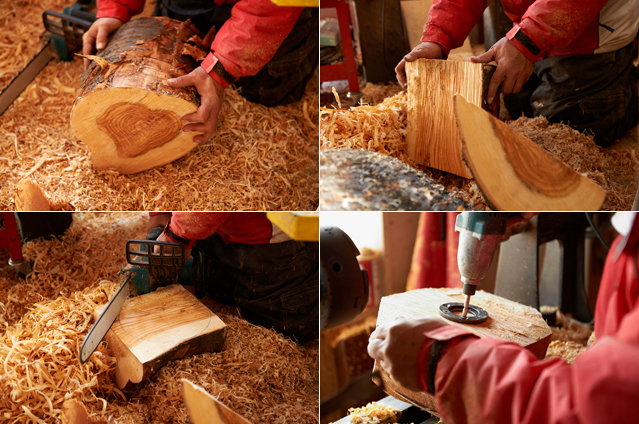
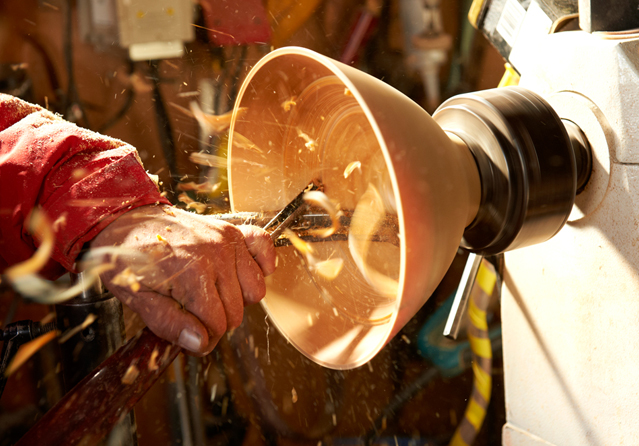
The salad bowl that emerged from the wood was given a quick dry. Then Jiro filed the surface smooth.
“Because my pieces are made of unseasoned timber,” he explained, “the wood has to be dried before it can be filed.”
Wares of unseasoned timber aren’t uncommon today, but not so long ago dishes made this way didn’t even exist.
“This woodworking technique originated in the United States and Australia in the early 1980s. It arrived in Japan only very recently, in 1998. It was around that time that I first became aware of the technique and started using it to make things myself.”
Jiro had a good reason for getting into this form of woodworking. After working as a baker and an organic farmer, he became a woodcutter and supported himself by making charcoal. In the process, he came face to face with a serious issue affecting Japan’s forests.
“The timber I use comes from mixed woodlands on the edge of inhabited areas, or what in Japanese are called satoyama. These woodlands were once used for charcoal and fuelwood, and the fallen leaves were gathered for compost. People lived in harmony with nature by cutting down trees to support themselves, creating a virtuous cycle. But lifestyle changes have led to neglect of the satoyama woodlands. They’re no longer properly cared for. In the old days, owners of forests had a close relationship with woodcutters. With the advent of a new generation, though, they don’t even know exactly where their forest is, and their links to woodcutters have been broken. Hence their woodlands have been left to grow wild. The government figures that won’t do, so it pays subsidies to chop down trees. But that hasn’t given rise to a self-sustaining industry. The felled trees almost all end up as industrial waste, except the few that are turned into woodchips or used for growing shiitake mushrooms. The United States and Canada have well-established forestry industries. The Japanese forestry sector is forty or fifty years behind by comparison.”
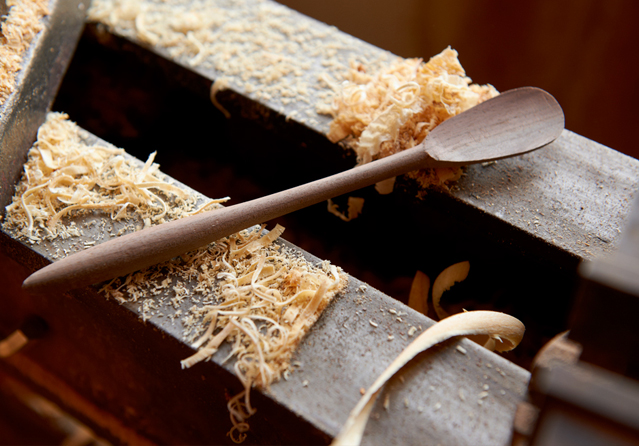

Jiro became increasingly concerned about the state of Japan’s forests. Then he happened to learn about the technique of woodworking with a lathe that had caught on in the United States and elsewhere. That, he reckoned, might be one way to make use of timber that would otherwise end up on the scrap heap. He promptly acquired the necessary equipment and set to work. But the going wasn’t easy.
“At first nobody would give me the time of day,” he says. Traditional woodworking in Japan involved seasoning the timber for months or years on end to remove any warping. Only then was it turned into a dish or bowl. People told Jiro that wares of unseasoned wood would never sell.
“Food stylists and culinary experts happily used them, though. I listened to their professional advice while asking myself what would be well suited to everyday use in the home, what the market would be receptive to. Thus my wares became as well known as they are today.”
Jiro isn’t choosy about the wood he uses to make an article. Above all, he believes in making the most of whatever timber is at hand.
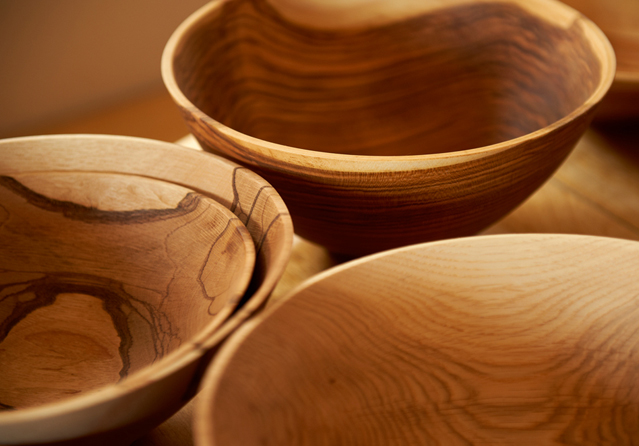
“The mere presence of wooden dishware on your dining table lends it greater warmth,” says Natsutsubaki’s Eto Aya. Wooden bowls and dishes can be used for a variety of purposes, such as serving salad or bread rolls. In Jiro’s home, located upstairs from his studio, beautifully hued wooden tableware is used for all manner of cuisine.
“Jiro gives his wares just a single coat of oil, because he wants to make them available as cheaply as possible,” Aya explains. “After that, he figures, you can condition them yourself as you use them in your own home. I tell customers to use them first for things like salads, so they gradually absorb the oil in the dressing.”
If you wipe the dish occasionally with vegetable or olive oil, the oil will penetrate the wood, conditioning it so that it doesn’t become stained. The richly colored wares we got to see in Jiro’s home were treated with olive oil.
“Treating the wood with a dark-colored oil gives it a darker hue,” explained Jiro’s wife. “If on the other hand you don’t want to alter the color much, it’s better to use vegetable oil.”
It’s even fine to use wooden tableware for stewed foods and soups as long as it’s well treated with oil.

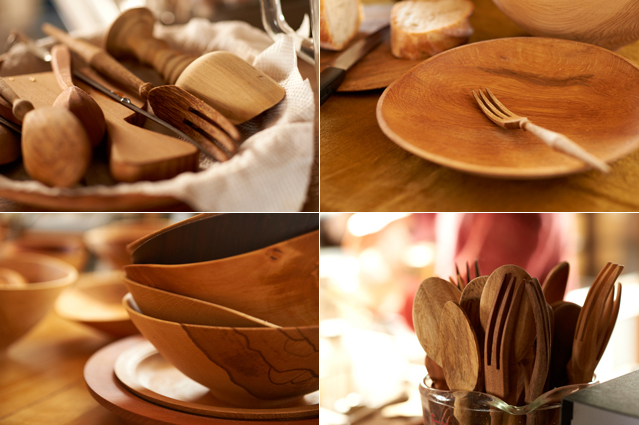
Many of Natsutsubaki’s patrons are taken with the production process itself.
“One couple ordered some of Suda-san’s wares to commemorate their wedding. One set was for their own home, and the other two sets were presents for the bride’s parents and the groom’s parents. You see, Suda-san first made a large salad bowl, then uses the wood scooped out in the process to make several smaller bowls, all from a single block of wood. So the entire family would get to use a set of bowls carved from a single block of wood. That’s what the couple found alluring.”
Kitchen spatulas are typically angled for right-handed use, but that makes them inconvenient for lefties. And so the left-handed spatula was born.
“Food experts and stylists each have their own personal preferences,” Jiro explains. “How should the utensil be angled? How big should it be? Some prefer a lightweight spatula. They may want it with a long or short handle. They may want it with or without a hole. I listen to the person who is going to be using the item and ask myself how to make it just right for them. I make wares that will please people.”
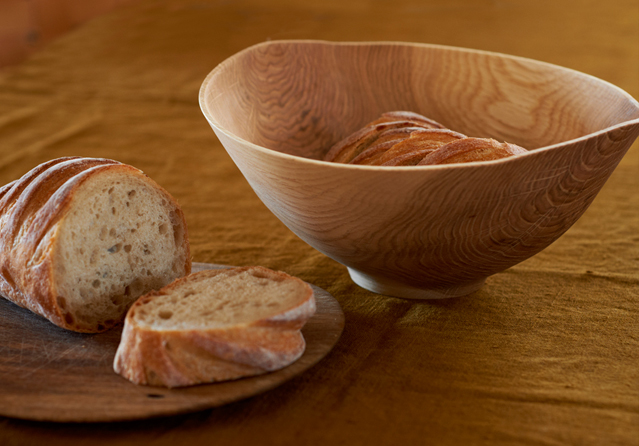
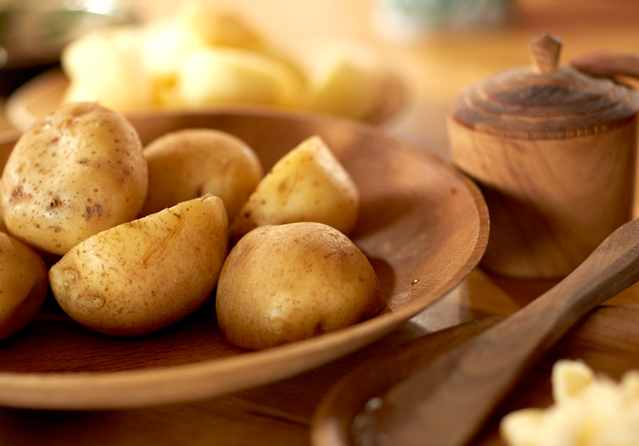
Jiro hopes to see young people take an interest in Japan’s trees and forests.
“I share my techniques with anyone who’s interested, and I now have people studying under me. But working with unseasoned wood isn’t easy. There are hardly any young people who know how to use a chainsaw and get by in the forest. Few are willing to keep it up because of all the challenges involved. It’s a tough situation.”
Despite these misgivings, Jiro continues carving in wood out of a desire to raise awareness of the state of Japan’s forests. His creations blend perfectly into any table setting and give it warmth.
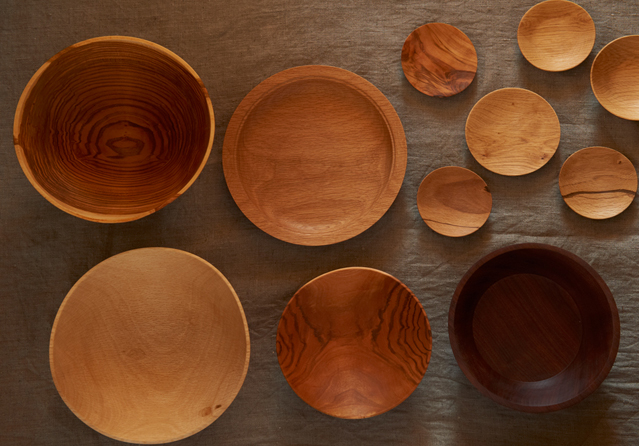
Natsutsubaki
A gallery in a remodeled traditional home located in a residential neighborhood in the Kamimachi district of Tokyo’s Setagaya Ward. On stepping through the gate, you’re greeted by a beautiful garden, an elegant building, and, inside, housewares and utensils carefully curated by proprietor Eto Aya.
